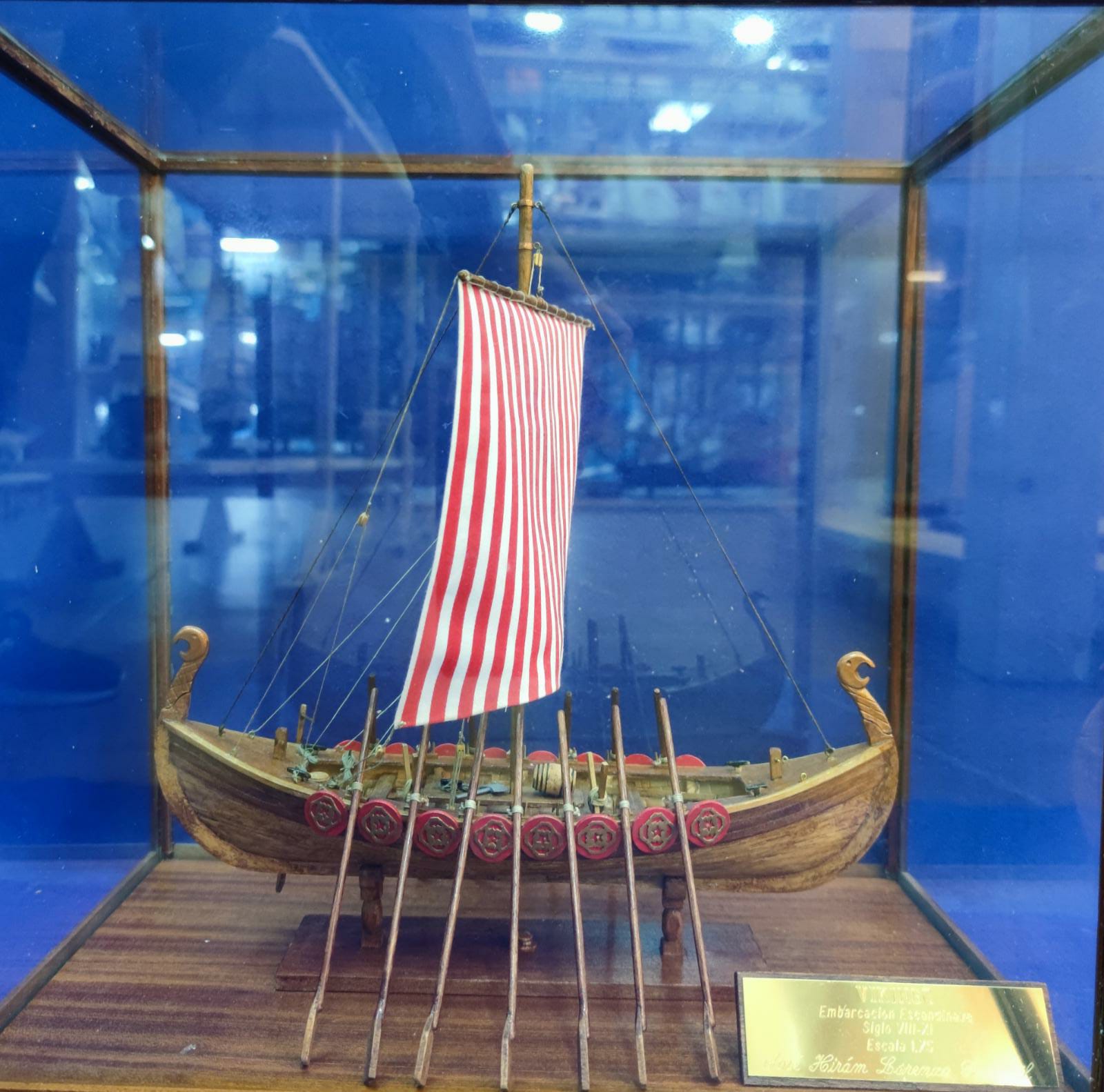
clic image

clic image
BARCA VIKINGA
Vikinga
Existían, básicamente, dos tipos de barco vikingo. Por una parte, los barcos de guerra (langskib en danés, langskip en noruego y långskepp en sueco: literalmente 'barco largo')a y, por otra parte, los barcos mercantes, hafskip ('barco de mar u océano'), típicamente los knarr (o knörr), que no eran tan largos y cuya principal diferencia era que, además de ser más anchos en el centro para mejor transportar mercancías o animales, eran fundalmentalmente barcos de vela con tripulaciones más reducidas que los barcos de guerra. Ambos tipos eran de casco trincado, con mástil abatible, ligeros y de poco calado, con un timón de espadilla que solo sobresalía un metro bajo la quilla, y que les dio a los vikingos una gran ventaja táctica respecto a su velocidad y maniobrabilidad, permitiéndoles realizar incursiones rápidas en zonas costeras, incluso para varar en la playa, subir ríos poco profundos y franquear cataratas, mediante el sencillo método de sacar el barco del agua y hacerlo rodar sobre troncos de madera.
There were basically two types of Viking ship. On the one hand, warships (langskib in Danish, langskip in Norwegian and långskepp in Swedish: literally 'long ship') a and, on the other hand, merchant ships, hafskip ('sea or ocean ship') , typically the knarr (or knörr), which were not so long and whose main difference was that, in addition to being wider in the center to better transport goods or animals, they were basically sailboats with smaller crews than ships of war. Both types were lashed hulls, with a folding mast, light and shallow, with a sculpted rudder that only protruded a meter under the keel, giving the Vikings a great tactical advantage in terms of speed and maneuverability. , allowing them to make quick forays into coastal areas, including beaching, climbing shallow rivers and crossing waterfalls, by the simple method of pulling the boat out of the water and rolling it on wooden logs.
Grundsätzlich gab es zwei Arten von Wikingerschiffen. Einerseits Kriegsschiffe (Langskib auf Dänisch, Langskip auf Norwegisch und Långskepp auf Schwedisch: wörtlich „langes Schiff“) a und andererseits Handelsschiffe, Hafskip („See- oder Seeschiff“), typischerweise die Knarr ( oder knörr), die nicht so lang waren und deren Hauptunterschied darin bestand, dass sie nicht nur in der Mitte breiter waren, um Waren oder Tiere besser transportieren zu können, sondern im Grunde Segelboote mit kleineren Besatzungen als Kriegsschiffe waren. Beide Typen waren festgezurrte Rümpfe mit einem leichten und flachen Klappmast und einem geformten Ruder, das nur einen Meter unter den Kiel ragte, was den Wikingern einen großen taktischen Vorteil in Bezug auf Geschwindigkeit und Manövrierfähigkeit verschaffte, sodass sie schnell vordringen konnten Küstengebiete, einschließlich Strandung, Klettern in flachen Flüssen und Überqueren von Wasserfällen, durch die einfache Methode, das Boot aus dem Wasser zu ziehen und es auf Holzstämmen zu rollen.



